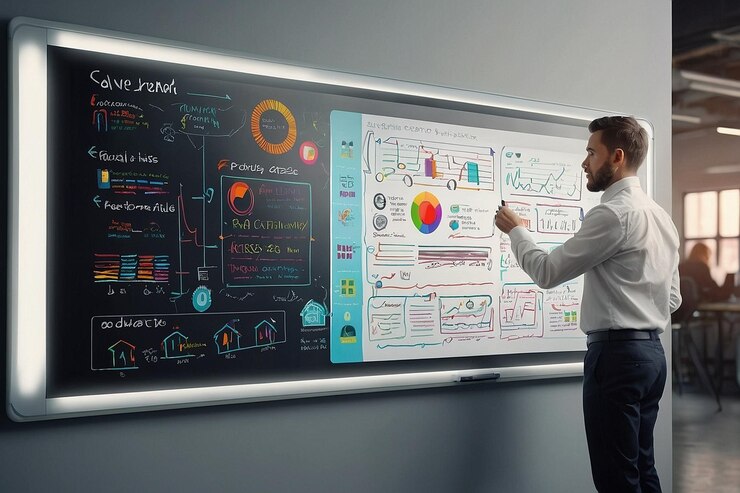In today’s rapidly evolving world, technology is reshaping various sectors, with education being one of the most affected. One tool leading this change is Blackboarduct, which merges traditional teaching methods with modern digital enhancements, offering a dynamic approach to learning that caters to various environments.
What is Blackboarduct?
This concept blends the familiar blackboard teaching system with advanced digital tools like cloud computing, AI, and interactive whiteboards. The result is a hybrid platform that supports a wide range of users—from academic institutions to corporate trainers—providing an interactive and engaging learning experience.
By leveraging traditional and modern elements, this system creates an environment where students and professionals can access learning materials, collaborate in real-time, and engage with multimedia content.
Key Features
Interactive Learning:
The platform allows educators to use videos, animations, and quizzes to engage learners. These features cater to different learning styles, ensuring students grasp complex concepts more effectively.
Collaboration Tools:
Built-in tools for discussion, group work, and video conferencing make collaboration seamless. This is particularly beneficial for remote learning environments where teamwork can still be achieved despite geographical distances.
Data-Driven Insights:
Educators can track student performance using analytics, providing real-time feedback and insights. This data helps adjust teaching methods to suit individual learning needs, ultimately improving overall outcomes.
Integration with Other Tools:
It integrates with tools like Google Classroom and Microsoft OneNote, creating a seamless experience where educators and students can find all their resources in one place.
Applications in Various Sectors
Education:
Schools and universities increasingly adopt this system to facilitate remote and in-class learning. The platform supports everything from basic educational concepts to advanced academic research with tools that allow engaging multimedia presentations.
Corporate Training:
Businesses use it for training programs, onboarding new employees, and project management. With features that support real-time collaboration, it’s beneficial for global teams working across time zones.
Personal Use:
Individuals also benefit from using this platform for personal learning, skill development, or even managing daily tasks. Its versatile features make it a tool for both formal education and self-directed learning.
Advantages
Accessibility:
One of the platform’s most significant benefits is its accessibility. Being cloud-based, it can be accessed from any device, making it easier for students or employees to engage with learning materials from anywhere.
Engagement:
Unlike traditional blackboards, interactive features keep learners engaged through touch inputs, multimedia elements, and real-time collaboration, improving comprehension and retention.
Personalization:
The platform tailors learning experiences to individual students’ needs through AI and machine learning, ensuring a more effective and enjoyable learning process.
Challenges
Despite its numerous advantages, the system comes with a few challenges:
Technical Glitches:
As with any tech-driven platform, there can be issues with software bugs or connectivity. This can hinder learning sessions, mainly when conducting essential assessments.
Resistance to Change:
Transitioning to this platform might be challenging for educators and students who are used to traditional methods. Comprehensive training is essential to ease this transition and show the benefits.
Cost:
Implementing such a system requires an initial investment in hardware and software. Although this can be a barrier, the long-term benefits, such as reduced material costs and increased efficiency, can justify the expense.
Future Trends
The future of educational platforms like this is promising, with exciting developments in AI and machine learning enhancing its capabilities. Upcoming innovations may include more sophisticated AI integration, enabling personalized learning experiences that cater to each student’s strengths and weaknesses.
Moreover, augmented reality (AR) and virtual reality (VR) will likely become significant components, providing immersive learning experiences that could revolutionize education and training environments.
Conclusion
Incorporating traditional methods and digital advancements, this hybrid platform transforms how education and corporate training are delivered. Its focus on accessibility, collaboration, and data-driven insights makes it an essential tool in today’s educational landscape. As technology continues to evolve, platforms like this will play an increasingly central role in shaping the future of learning.


